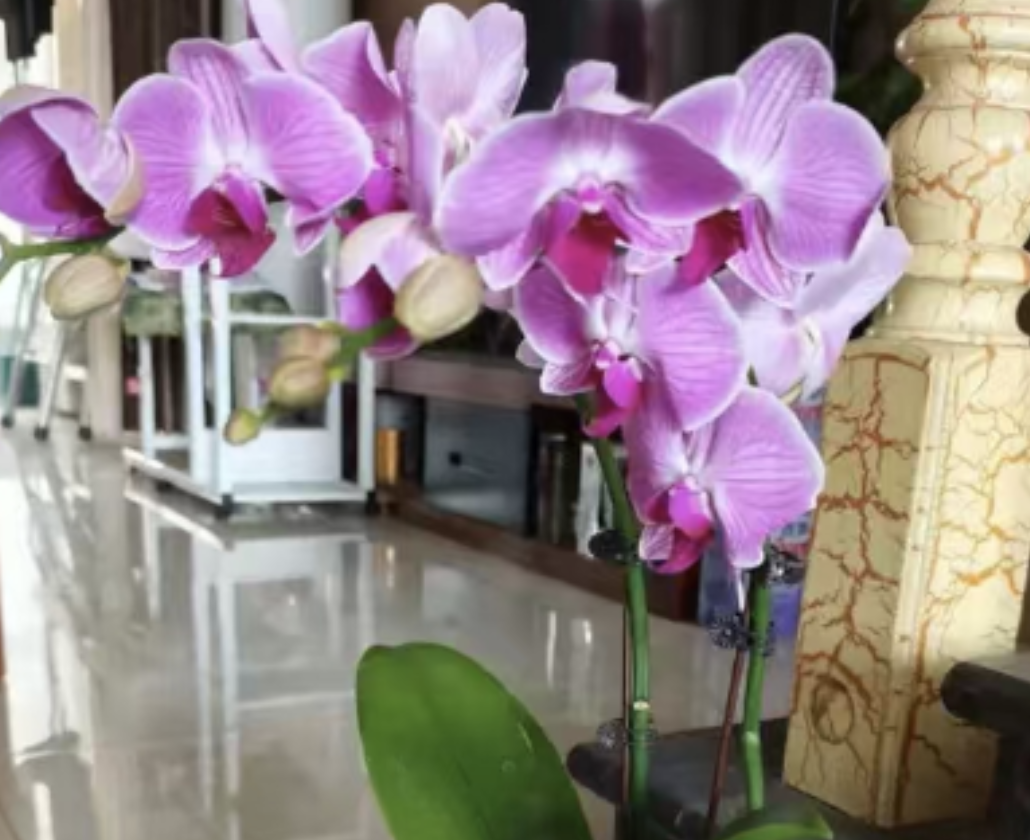In today's urban life where every inch of land is precious, how to skillfully use green plants to decorate home or office spaces has become the focus of attention for many people. Green plants can not only add vitality and energy to the indoor environment but also visually expand the sense of space. The following will introduce in detail several green plant placement techniques to help you easily create a spacious and bright living environment.
As an important element of indoor decoration, green plants can not only purify the air but also visually expand the sense of space. Here are several ways to use green plants to expand the sense of space:
Vertical Extension: When space is limited, vertical extension is an effective means to expand the visual space. Choose tall green plants such as bird of paradise, monstera, etc., and place them in the corners of the room or against the wall. This can guide the line of sight to extend upward, making people feel that the room is taller. In addition, using hanging flowerpots or climbing plants, such as ivy, devil's ivy, etc., to grow along the wall or ceiling can also create a vertical visual effect and further increase the layering of the space.
Creating a Sense of Layering: By placing green plants of different heights and forms, a rich sense of layering can be created. For example, place small succulent plants on the desk or windowsill, place slightly larger potted green plants on the ground, and at the same time set some tall green plants in the corners or open areas of the room as focal points. Such a layout can not only make the space appear fuller but also allow people's eyes to wander among the green plants, thus ignoring the actual size of the space.
Color Contrast: Color contrast is also an effective way to expand the sense of space. When choosing green plants, you can consider forming a contrast with the colors of the room walls, furniture and other elements. For example, if the room walls are light-colored, you can choose green plants with bright colors such as dark green or red for decoration; if the furniture is mainly dark-colored, you can choose green plants with bright tones such as light green or white to brighten up the space. Through color contrast, people's attention can be attracted, and thus the actual size of the space can be ignored.
Guiding the Line of Sight: Using the placement position and direction of green plants to guide the line of sight is also a method to expand the sense of space. For example, placing a tall green plant at the entrance or in the corridor of the room can guide people's line of sight to extend from the outside to the inside; setting some climbing plants or hanging flowerpots at the end or in the corner of the room can guide the line of sight to extend upward or into the distance. Through such line of sight guidance, people can feel the infinite extension and openness of the space.
Green plants have great potential in visually expanding the sense of space. Through methods such as vertical extension, creating a sense of layering, color contrast and guiding the line of sight, we can skillfully use green plants to create a more spacious and bright indoor environment.
Green Plant Placement Techniques:
The Method of High and Low Scattered Placement: The method of high and low scattered placement is a simple and effective way to place green plants. By combining and matching green plants of different heights, the monotony of the space can be broken and the sense of layering can be increased. For example, in a corner of the living room, a tall foliage plant can be placed as the main scene, and several small potted plants or succulent plants can be dotted around it to form a visually staggered effect.
The Triangular Placement Method: The triangular placement method is a way to place green plants by using the principle of the stability of a triangle. Placing three green plants of similar sizes together in the shape of a triangle can form a stable visual focal point. This placement method is not only beautiful and elegant but also can effectively guide the flow of the line of sight and make the space appear more open.
The Method of Sparse Form: The method of sparse form is suitable for those green plants with relatively sparse leaves. By dispersing and placing such green plants in different positions in the space, a relaxed and natural atmosphere can be created. Meanwhile, the sparse leaves can allow light to pass through to form mottled light and shadow effects, adding a touch of warmth and romance to the indoor environment.
The Visual Focal Point Method: The visual focal point method is to place a green plant with a unique shape or bright color in the central position or a conspicuous place of the space to make it the visual focal point of the whole space. This placement method can quickly attract people's attention, break the dullness of the space and make the indoor environment more vivid and interesting.
The Hanging Placement Method: The hanging placement method is a way to hang green plants in the air for placement. This method can not only save floor space but also form a green barrier between the green plants and the ceiling, adding a unique charm to the indoor environment. Meanwhile, the hanging green plants can sway gently with the wind, bringing a breath of fresh air and a peaceful atmosphere.
The role of green plants in visually expanding the sense of space cannot be ignored. Through skillful selection and placement of green plants, a small living room can also become spacious, bright and full of vitality.
How can green plants visually expand the sense of space?

Share with
Tagged in :




Leave a Reply